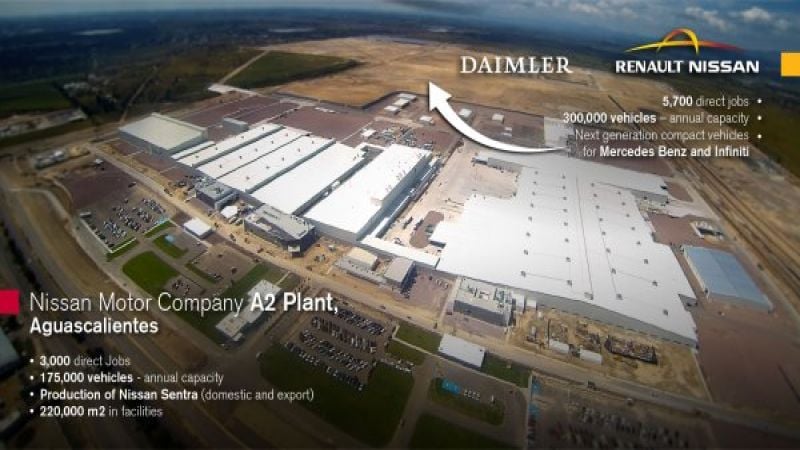The partnership between Renault-Nissan and Daimler is growing fast. For Nissan, specifically the Infiniti brand, this means faster development and more economies of scale to bolster the brand's goal for a 10 percent market penetration. For Daimler (Mercedes-Benz), it means access to more production capability at far lower cost.
The partnership is already working in Europe, where small cars are being produced in unison, from the same production facility. The cars retain their individual design and identities, but share several parts internally. The Daimler-Nissan/Renault collaboration is continuing now with the added engine-building capability of the Decherd, Tennessee plant, which just went online.
The Decherd plant is building 2.0-liter engines for use in European vehicles made by both Renault-Nissan and Daimler brands. Specifically the European Infiniti Q50 sedan and Mercedes-Benz C-Class. It should be noted that these cars are assembled in Tuscaloosa, Alabama. The plant, owned by Infiniti, gives the company much-needed expansion for its production capability while belaying costs by partnering with Daimler to make Mercedes engines as a cost-saving collaboration both companies can benefit from.
"The opening of this new facility is the beginning of our manufacturing expansion. Infiniti needs additional capacity to fuel the expected growth which will be driven by our expanding portfolio," said Infiniti president Johan de Nysschen. "It will leverage the technologies, expertise and highest level of manufacturing standards from both companies, which, in turn, benefit from the synergy and economies of scale of this joint effort."
Meanwhile, in Mexico, the two companies are planning to collaborate on a one billion Euro investment ($1.37B USD) on a jointly-owned plant in Aguascallentes, Mexico. The plant will be next to the current Nissan plant, but will be a joint venture between Infiniti and Daimler to build small luxury cars for the North American and other markets. Total capacity will be about 300,000 units per year and production is expected to begin in 2017 for Infiniti and 2018 for Mercedes-Benz. The companies are splitting the building and its costs 50:50 and full capacity is expected by 2021. In tandem with the Nissan plant next door, this will increase supply and scales to improve costs for both.
Carlos Ghosn, Chairman and CEO of the Renault-Nissan Alliance: “Joint development of compact premium vehicles and joint production in Aguascalientestogether represent one of the largest projects between the Renault-Nissan Alliance and Daimler. It also shows how our collaboration, which began in Europe, has become global in scope.”
Again, Infiniti gains both production capability and faster development as well as economies of scale increases. Meanwhile, Daimler gains production capability at lower cost and greater economies of scale.
Could this heavy collaboration be leading to a Daimler-Renault-Nissan alliance in the future? Not likely. Neither the Alliance nor Daimler is financially in need of such a partnership, but it does mean that both groups are now pushing ahead to gain ground against competitors as a mutually-beneficial collaboration.











